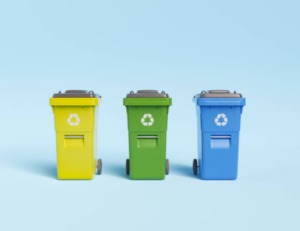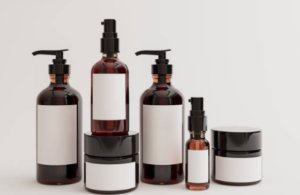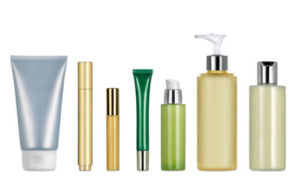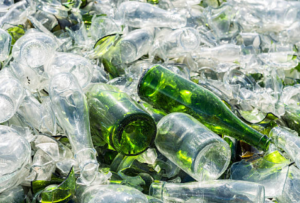Beyond Aesthetics

In an era where sustainability is no longer a trend but a responsibility, the beauty industry finds itself at a crossroads, grappling with choices that extend beyond the allure of a product. The packaging of skincare products, once an afterthought, is now at the forefront of the sustainability debate. Glass and plastic, two stalwart contenders, vie for supremacy, each carrying its own set of environmental advantages and drawbacks. In this exploration, we delve into the intricacies of the glass vs. plastic debate in skincare packaging, seeking to unravel the complexities that shape our choices for a more sustainable beauty routine.
The Rise of Conscious Consumerism
The evolution of the beauty industry over the past decade reflects a broader societal shift towards conscious consumerism. As environmental concerns, sustainability, and ethical practices gain prominence in public discourse, consumers are redefining their expectations from the brands they choose to support.
- Environmental Awareness: Today’s consumers are more environmentally aware than ever before. With information at their fingertips, they are well-versed in the environmental impact of different materials and manufacturing processes. This awareness extends to skincare and beauty products, prompting individuals to scrutinize the complete lifecycle of the items they purchase, including the packaging.
- Demand for Transparency: The demand for transparency has become a driving force behind consumer choices. Modern consumers seek clear and honest communication from brands, not only regarding the ingredients in their products but also about their commitment to sustainable practices. This shift in expectations has compelled beauty brands to be more forthcoming about their packaging choices and the environmental footprint associated with their products.
- Social Responsibility and Ethics: Beyond personal beauty aspirations, consumers are aligning their choices with broader ethical considerations. Brands that demonstrate a commitment to social responsibility, fair labor practices, and environmental stewardship are increasingly favored. Skincare enthusiasts are choosing brands that reflect their values, and this extends to the eco-friendliness of the packaging.
- Educated Decision-Making: The rise of conscious consumerism in the beauty industry is closely tied to education. Online platforms, social media, and dedicated sustainability campaigns have empowered consumers with knowledge about the impact of various packaging materials on the environment. Armed with this information, they are making informed decisions about the products they purchase and, by extension, the kind of packaging they endorse.
- Influence of Influencers and Advocates: Social media influencers and environmental advocates play a pivotal role in shaping consumer perceptions. As influencers share insights into sustainable beauty practices and champion brands that prioritize eco-friendly packaging, their followers are more likely to adopt similar values. This ripple effect amplifies the impact of conscious consumerism in the beauty industry.
- Shift in Brand Loyalty: Brand loyalty is no longer solely built on product efficacy or brand recognition. Conscious consumers are more likely to remain loyal to brands that demonstrate a genuine commitment to sustainability. This loyalty extends beyond the product itself to encompass the brand’s overall environmental practices, including the materials used in packaging.
- Impact on Industry Standards: The collective voice of conscious consumers has catalyzed a reevaluation of industry standards. Beauty brands, once focused primarily on aesthetics and product performance, are now under increasing pressure to align with sustainability benchmarks. This shift in expectations is reshaping the very foundations of the beauty industry, challenging traditional norms and fostering a more environmentally responsible ethos.
Glass: A Beacon of Elegance and Recyclability
- Eco-Friendly Origins: Glass, often hailed for its elegance and durability, is made from natural raw materials like sand, soda ash, and limestone. Its production involves less harmful chemicals compared to plastic, making it a more eco-friendly choice from the start.
- Endless Recycling Potential: One of glass’s strongest sustainability credentials lies in its recyclability. Unlike plastic, glass can be recycled indefinitely without losing its quality. A glass bottle recycled today could become part of a new glass container within weeks, reducing the demand for raw materials and energy.
- Preserving Potency: Glass is impermeable and inert, ensuring that the skincare products it houses remain uncontaminated by external factors. This is particularly crucial for formulations with active ingredients that could degrade when exposed to certain plastics.
- Luxury and Perceived Value: Glass packaging often conveys a sense of luxury and quality. The weight, sound, and feel of a glass container can enhance the overall consumer experience, contributing to the perceived value of the product.

Plastic: Lightweight Convenience with a Heavy Environmental Toll
- Lightweight and Cost-Effective: Plastic’s ubiquity in the beauty industry can be attributed to its lightweight nature and cost-effectiveness. It’s cheaper to produce, transport, and requires less energy during manufacturing compared to glass.
- Versatility in Design: Plastic’s malleability allows for intricate and innovative packaging designs. Brands can experiment with various shapes, sizes, and dispensing mechanisms, providing both aesthetic and functional benefits.
- Concerns About Recycling: While many plastics are technically recyclable, the reality is far from ideal. Different types of plastics exist, and the recycling infrastructure varies widely. This complexity often leads to lower recycling rates, with a considerable amount of plastic ending up in landfills or the ocean.
- Environmental Impact of Production: The production of plastic involves the extraction of fossil fuels, contributing to greenhouse gas emissions. Additionally, the manufacturing process releases harmful chemicals, and the disposal of plastic waste poses a significant environmental threat.

The Recycling Dilemma
- Glass: A Circular Economy Model: While glass stands as a symbol of sustainability due to its infinite recyclability, the recycling process itself isn’t without challenges. The efficiency of glass recycling depends on the collection and sorting infrastructure in place. In regions with robust recycling systems, glass bottles can seamlessly circulate through a closed-loop system, significantly reducing the need for new raw materials. However, in areas where recycling facilities are lacking or inefficient, the full potential of glass’s circular economy model may not be realized.
- Plastic: Struggles in the Recycling Maze: The recycling journey for plastic is marked by a complex and often convoluted maze. Not all plastics are created equal, and the vast variety of plastic types poses a challenge for recycling facilities. The process becomes more intricate when considering cosmetic packaging, which may involve different plastic components. Sorting and processing various types of plastic can be difficult, leading to contamination and reduced recyclability. Additionally, the lack of standardized recycling practices globally exacerbates the issue, as certain plastics may not be widely accepted by recycling facilities, causing them to end up in landfills or oceans.
- Contamination Concerns: Both glass and plastic face challenges related to contamination during the recycling process. For glass, contamination can occur if different colors of glass are mixed, leading to quality issues in the recycled material. In the case of plastic, the problem is more pronounced. Contamination can arise from mixing different types of plastics, as well as from residues left in bottles, such as leftover beauty products. This contamination reduces the quality of the recycled material, impacting its usability in manufacturing new products.
- Recycling Rates and Consumer Participation: The effectiveness of recycling programs is contingent on high participation rates among consumers. Glass, with its clear recycling benefits, often enjoys better recycling rates. In contrast, plastic recycling rates can be lower due to challenges in collection, sorting, and the complexity of plastic waste streams. Consumer education and engagement play a crucial role in addressing this dilemma, as informed consumers are more likely to participate in recycling programs correctly.
- Technological Innovations: Technological advancements are gradually addressing some of the challenges associated with glass and plastic recycling. Innovations in sorting technologies, such as automated optical sorting systems, are improving the efficiency of recycling facilities. Similarly, advancements in chemical recycling for certain plastics hold promise in mitigating the environmental impact of traditional recycling methods. As these technologies mature and become more widespread, they have the potential to reshape the recycling landscape for both glass and plastic.
- Policy and Infrastructure: The effectiveness of recycling initiatives is closely tied to government policies and the infrastructure in place. Regions with well-established recycling policies and infrastructure tend to experience higher recycling rates for both glass and plastic. Conversely, areas with insufficient recycling infrastructure or lax regulations may struggle to address the recycling dilemma effectively.
- Carbon Footprint: Glass production generally has a higher carbon footprint compared to plastic due to the energy-intensive melting process. However, glass’s endless recyclability and the use of recycled glass can offset this impact over its lifecycle.
- Consumer Preferences: As sustainability becomes a central concern for consumers, there is a growing preference for brands that prioritize eco-friendly packaging. Glass, with its recyclability and perceived luxury, aligns well with the values of environmentally conscious consumers.
- Industry Initiatives: Recognizing the impact of packaging on the environment, many beauty brands are reevaluating their choices. Some are transitioning to more sustainable options, including glass, and investing in refillable packaging solutions to minimize waste.
- Hybrid Solutions: Recognizing the merits of both glass and plastic, some brands are exploring hybrid solutions. For instance, using glass for the primary packaging and incorporating sustainable, recycled plastics for secondary components like caps and pumps.
- Refillable Systems: Refillable packaging models are gaining traction in the beauty industry. Brands are designing products with reusable containers and offering consumers the option to purchase refills, reducing the need for single-use packaging.

In the dynamic landscape of skincare packaging, the glass vs. plastic debate is a multifaceted exploration of sustainability. Glass, with its elegance, endless recyclability, and minimal environmental impact, stands as a beacon of eco-friendliness. Plastic, lightweight and cost-effective, dominates the industry but grapples with the challenges of recycling and environmental harm.
As consumers increasingly demand transparency and sustainability from beauty brands, the industry finds itself at a pivotal moment. The choice between glass and plastic extends beyond aesthetics, permeating the very ethos of a brand. The path towards a greener future involves not just selecting the right material but also embracing innovative solutions, such as refillable systems and hybrid packaging, that marry beauty with responsibility.
In the end, the glass vs. plastic debate is a call to action for the beauty industry to redefine its standards, embrace innovation, and collectively contribute to a more sustainable and beautiful world.

